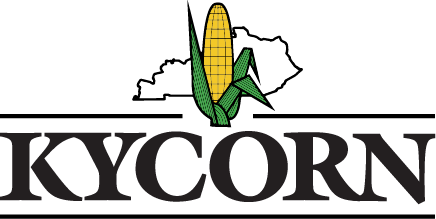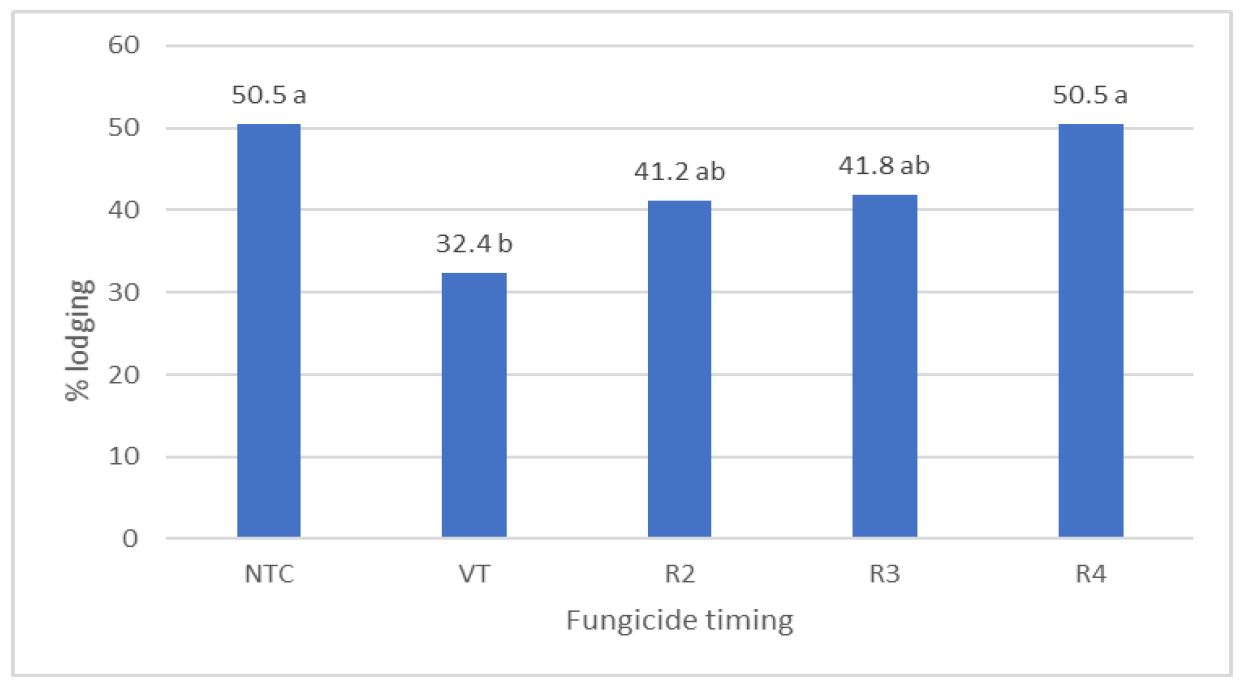Kiersten Wise– University of Kentucky
Introduction
Foliar fungicides are a common input in corn production, but they are an added expense, and farmers frequently ask questions about how to optimize fungicide use in corn. Understanding how fungicide timing and foliar disease affect standability will help us more fully understand how to maximize profitability of fungicide use in corn. This research will also help us provide unbiased research results to Kentucky farmers about when and where fungicides may reduce disease and improve yield and standability in corn.
Objectives:
-
Determine the effect of fungicide timing on foliar disease control, and lodging (standability) at the University of Kentucky Research and Education Center.
-
Disseminate results to stakeholders through multiple formats, including UK County Agents, meetings, print and web resources.
Research Methods:
Research plots were established at the University of Kentucky Research and Education Center in Princeton, KY in 2018. The experiment was designed as a split-plot arrangement with planting date as the whole plot, with two different plant dates, normal planting time for the year (May 9) and late planted (May 25). Hybrid served as a sub-plot, and two hybrids were selected having similar disease ratings for southern rust and characteristics, but differing stalk strength ratings. Hybrid P1555CHR had a high rating for stalk strength, and P1257AM had a medium stalk strength rating. Plots were planted at a target population of 32,000 seeds/acre on 30-in. row spacing, and 30-ft in length. Fungicide treatment timing was randomly arranged within each sub-plot and each treatment was replicated four times. Treatments consisted of Trivapro at 13.7 fl oz/A applied using a hand-held backpack sprayer at one of the following growth stages in each hybrid/planting date combination: tasseling (VT), blister (R2), milk (R3) and dough (R4). Percent foliar disease severity on the ear leaf was rated for 5 plants per plot at R4, and stalk strength assessments were conducted at maturity by pushing 10 plants per plot at 30 degrees from center. Plants that snapped or did not spring back were considered lodged, and the total % lodged plants per plot was averaged for each treatment. Yield, grain moisture and test weight were collected from the inner two rows of the plot and adjusted to 15.5% grain moisture. Data were analyzed using mixed model analysis of variance and treatment means separated using least square means.
Year 1 Results:
Planting date, hybrid, and fungicide timing all significantly affected disease severity in this trial (Table 1). Although there was no southern rust pressure in the trial, gray leaf spot was observed at low to moderate levels. Higher disease levels were observed in hybrid 1257AM, which was slightly more susceptible to gray leaf spot than P1555CHR. Higher disease severity was also observed in treatments planted on May 25, compared to treatments planted on May 9. All fungicide timings reduced disease compared to the non-treated control, with the lowest levels of disease observed when fungicides were sprayed at VT, followed by R2. Interestingly, although disease severity was influenced by fungicide timing, fungicide timing had no effect on yield. This is likely because disease severity was not high enough in 2018 to reduce yield in this trial, with less than 5% disease severity in the non-treated control. However, planting date and hybrid did significantly affect yield, with trials planted on May 9 having higher yield than trials planted on May 25, and hybrid P1257AM yielding higher than P1555CHR.
The most interesting observation of this trial was the impact of treatments on lodging. Both planting date and fungicide timing significantly affected lodging. Increased lodging was observed in the May 9 planted treatments compared to those planted on May 25. Additionally, fungicide applied at VT had the lowest percent lodging compared to other fungicide timings (Figure 1). Hybrid did not influence lodging, despite hybrid P1555CHR having a higher rating for stalk strength compared to hybrid P1257AM.
Figure 1. Effect of fungicide timing on percent (%) lodging across hybrids and planting dates for experiments conducted at the University of Kentucky Research and Education Center in 2018. Values followed by different letters indicates that values are significantly different at the P = 0.05 level. NTC = non-treated control.
Conclusions:
• Fungicide applied at tasseling (VT) resulted in the greatest reduction in foliar disease and lodging.
• Fungicide applications applied at R4 did not reduce lodging (standability) compared to a non-treated control.
• Hybrid stalk strength rating did not influence standability in this trial.
• Only planting date and hybrid impacted yield in this trial. Fungicide application did not increase yield compared to the non-treated control.
Foliar disease severity was increased in later planted treatments, but lodging was higher in early planted trials. This is likely due to the high heat and limited moisture that occurred during tasseling through blister in the trials planted on May 9. These trials were at a vulnerable growth stage to stress during the highest period of heat and moisture stress, which likely resulted in some stalk stress. Although southern rust was not present in 2018, we were still able to draw interesting conclusions about the impact of hybrid, planting date, and fungicide timing on disease severity and standability.
Message and Benefit to Kentucky Corn Growers:
-
Farmers can see the greatest benefit for foliar disease control AND have the greatest chance of improving standability in corn when fungicides are applied at VT.
-
Planting corn at recommended timings improves the likelihood of achieving maximum yield potential, even in years with moderate stress
-
In low disease pressure years, fungicide application may not increase yield, despite reducing disease and lodging, and that economic cost needs to be considered when making management decisions
Additional economic analysis are underway to help determine if there is a cost benefit to improving standability, other than just serving as an “insurance” policy against lodging. Research results will be disseminated through Extension channels throughout Kentucky in 2019.
Future research:
Fungicide applications occurring at R2-R3 may marginally reduce disease severity and lodging, but there was not enough disease in the trial to fully assess the effects of fungicide timing on disease control, standability and yield under high disease pressure. Conducting this trial a second year in different weather conditions can help determine if research results are consistent over time.



